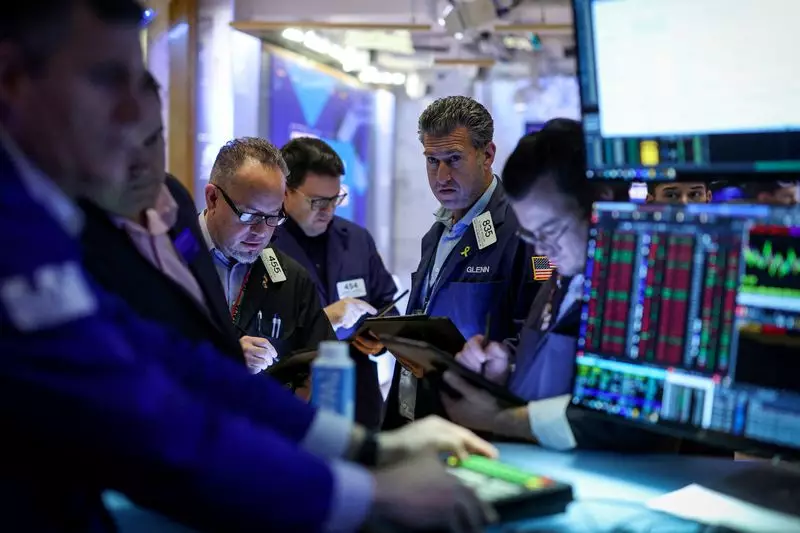As we step into 2025, the investment landscape is replete with uncertainties and expectations that could shape market performance in unprecedented ways. In 2024, the U.S. stock market experienced remarkable gains, with the S&P 500 appreciating by around 25% before December 27th, and the Nasdaq Composite index climbing impressively beyond the 20,000 mark with a 31% increase. However, the market’s recent sell-off raises pertinent questions about the sustainability of this upward trajectory and how various upcoming economic indicators will influence investor sentiment and decision-making.
Historical patterns suggest a ‘Santa Claus rally’ effect towards the end of the year and the beginning of January. This seasonal trend has statistically propelled gains in the S&P 500 by an average of 1.3% since 1969 during this period. Despite a minor pullback in recent trading, the optimistic sentiment remained evident with the S&P appreciating 1.77% over the last five sessions of December. Traders often capitalize on these seasonal trends, suggesting that many market participants are attempting to position their portfolios favorably heading into January. This behavior illustrates the prevailing belief among traders that the first days of the new year traditionally continue the upward momentum generated by year-end trading.
However, the potential volatility stemming from profit-taking after a robust year shouldn’t be overlooked. Analysts suggest that the market may face reallocation pressures as investors adjust their strategies for the upcoming year. As we delve into January, critical pieces of economic data such as the U.S. employment report on January 10 will be pivotal, shedding light on labor market health and providing insights into consumer spending and economic growth forecasts.
The trajectory of the stock market in the upcoming weeks will largely hinge on the reports of corporate earnings for the fourth quarter and associated growth predictions for 2025. Anticipations for a 10.33% earnings growth in 2025—slightly below the prior year’s expectations—need careful scrutiny, especially given the diverse impact of President-elect Trump’s policy initiatives on various sectors. Certain industries, particularly banking, energy, and cryptocurrencies, may experience enhanced growth prospects based on the expected tax reliefs and deregulation the new administration may foster.
However, with every hopeful outlook comes a layer of complexity. Many investors are speculating about the potential disruptions stemming from Trump’s inauguration on January 20. The anticipated swift implementation of executive orders across a broad range of topics could introduce both opportunities and challenges. The prospective trade policies, particularly those involving tariffs on Mexican and Chinese goods, could significantly affect market dynamics, influencing inflation and corporate margins, ultimately translating into pricing strategies for consumers.
Another area of concern involves currency market reactions to Trump’s policies. The expected volatility will likely challenge the global currency landscape, with significant implications for the euro, Canadian dollar, Mexican peso, and the Chinese yuan. The uncertainties surrounding which policies will materialize quickly can result in speculative trading as market participants seek to hedge their positions against rapid fluctuations. Helen Given’s insight highlights the complexity that incoming policy directions could introduce not just domestically but also across international markets.
The Federal Reserve’s monetary policy decisions are also set to play a critical role in shaping market trends. The conclusion of the first monetary policy meeting of 2025 could either bolster or dampen investor enthusiasm, especially considering the recent skeptics regarding the Fed’s signaling around interest rate cuts. With some investors banking on lower rates to enhance corporate profitability, any deviation from anticipated policy adjustments could ripple through equity valuations.
Moreover, the incoming administration’s perceived friendliness towards cryptocurrencies presents an exciting possibility for the decentralized finance sectors. Crypto investments are gaining traction amid uncertainty, bolstered by favorable regulatory stances anticipated under Trump’s leadership. This evolving landscape may create divergent pathways for asset classes, challenging traditional investment frameworks and prompting investors to reassess their portfolios.
As we embark on 2025, the convergence of seasonal trends, economic data releases, policy shifts, and global market dynamics creates a complex tapestry for investors to navigate. Each element has the potential to influence market performance in unique ways. Therefore, staying informed and agile will be crucial for investors as they assess risks and opportunities in what promises to be an intriguing year ahead. Continuous monitoring of economic indicators and fiscal policies while diversifying investments may provide the best defense against an unpredictable market landscape.

